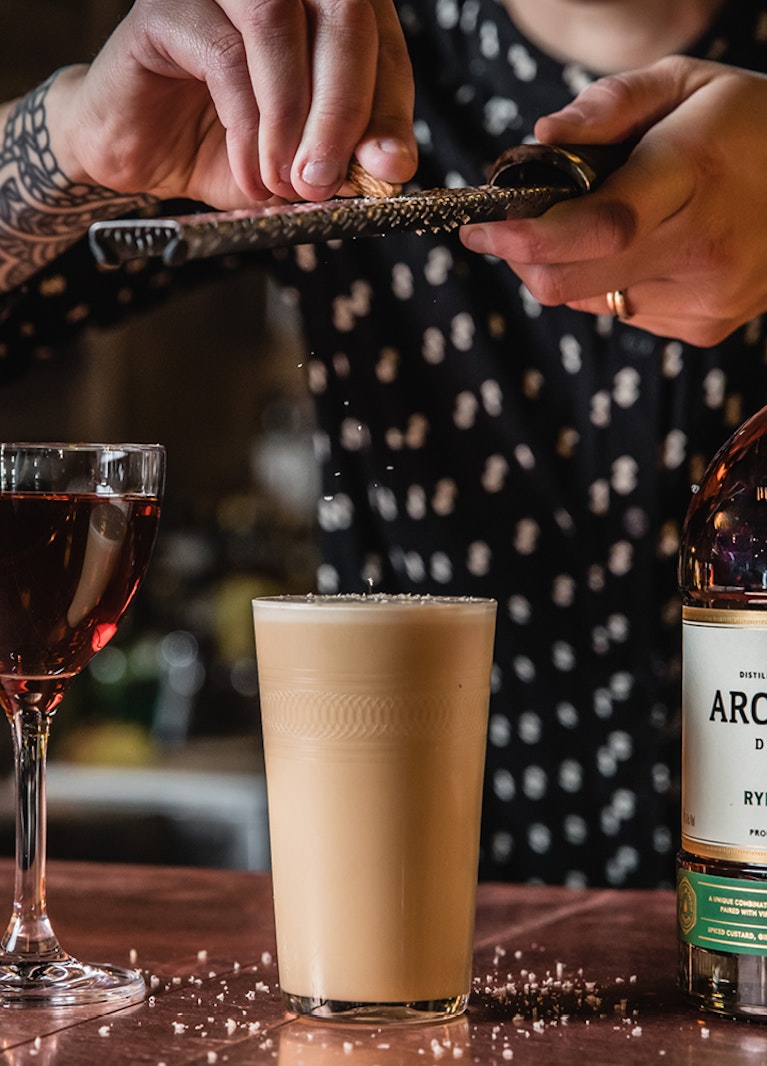Whisky Is A Woman’s Drink
In recent history, whisky has mistakenly been deemed a manly drink. When we are shown images of someone drinking the spirit, our eyes normally land on a man with a bushy beard and flannel shirt, or another type of man; one decked out in a tuxedo and high roller watch. Very rarely are we shown a woman drinking a whisky, unless she’s playing the femme fatale in an incredibly revealing outfit.
To be fair, I have sipped whisky wearing all three of the aforementioned looks. But that’s beside the point. What I am here to tell you is that next time someone scoffs at a lady drinking whisky, politely tell them that whisky was invented by women.

There are countless women who have shaped the whisky world as we know it today, and many of them remain nameless in the history books. But there are three women who we should remember, and to them I raise a celebratory dram.
Maria the Jewess is credited with inventing the bain-marie, which is an instrument commonly used in cooking and science. We see it in every hotel breakfast buffet around the world warming scrambled eggs. The instrument still carries her name to this day, and was the first step towards distillation as it allows liquids to be heated at a steady temperature. There is very little known about Maria. She worked in the first century and holds the title of the first alchemist in history. While she didn’t discover how to turn lead into gold, she made significant contributions to Chemistry.
Next up we have Hypatia, who lived in Egypt from 355 - 415CE. She was an extraordinarily talented philosopher, mathematician and astronomer, who taught many students at the Alexandrian school. Hypatia is also credited with inventing instruments for distillation as well as discovering the specific gravity of liquids. Without her, we would not be able to measure the strength of alcohol. And while she is often remembered for her violent death (she was murdered by a mob of Christian fanatics), Hypatia’s accomplishments remain relevant today.
Last, but definitely not least, is Cleopatra—the Alchemist, not the Cleopatra you're thinking of. Cleopatra lived during the third century and made improvements to the bain-marie, before she invented the alembic. This is the instrument that made complete distillation possible!
Distilling was always seen as women's work—it was boring, it was repetitive and it was done at home while the men were tilling the fields. Written recipes for distillation and brewing were even included in books for housewives, the first being The Housekeepers PocketBook; And Compleat Family Cook back in 1733. It was only during the industrial revolution that men started entering the distillation workforce.
And even as distillation moved from the home into the wider world, women remained involved in different ways. For example, female bootleggers would hide kegs under their dresses, pretending to be pregnant, and smuggle whisky right under police officers’ noses during the prohibition. Genius.
It’s widely accepted that booze has shaped history and humanity to make it what it is today. We stopped our hunter gatherer lifestyle to grow grain to make beer. With distillation, we could safely store liquid and set out on long sea voyages to discover new lands. And now you know who to thank for that.
So, the next time someone asks for a girlie drink, give them a whisky.